Runner Frequently Asked Questions
Why should I register with RunTogether?
It’s free and straight-forward to register with RunTogether and there are lots of benefits:
- Find and choose from 1000s of RunTogether group running sessions up and down the country
- A simple online booking process to reserve your chosen run group sessions
- Hundreds of running routes all over England, which you can download and save to your smart phone
- Personal ‘MyRunTogether’ page for tracking and saving your run group sessions and routes
- Running support services and articles to help you start and continue to run
- The assurance that RunTogether GroupLeaders are fully trained and insured by England Athletics, the membership and development body for grassroots athletics and running in England
- Monthly e-newsletters with news, tips and advice from RunTogether
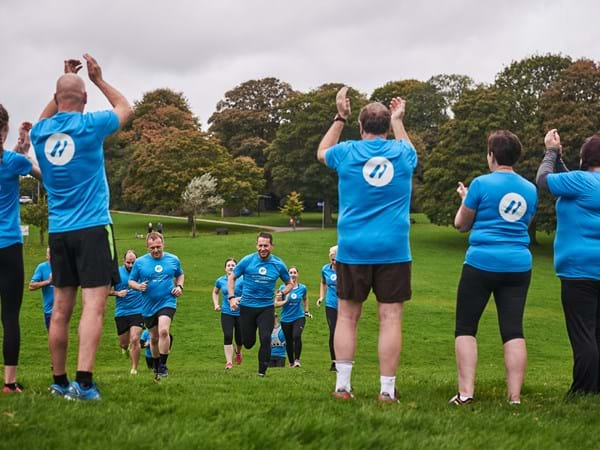
What is England Athletics?
RunTogether has been created by England Athletics, the membership and development body for grassroots athletics and running in England, to provide fun, friendly, inclusive running opportunities for everyone in England.
Are RunTogether groups the same as Run England?
Very similar, but with lots of improvements. As with Run England, the goal of RunTogether is to provide opportunities for more people to access running in a safe and supportive environment. However, following a detailed review of Run England in 2015 during which leaders, runners and various other stakeholders were asked for their honest views and experiences, the following improvements have been made;
-New name and brand, allowing groups to create their own logos whilst being part of the wider community
-New website where runners register and book onto sessions (no more paper forms)
-Free personal 'My RunTogether' page for every runner to track their runs and favourite routes
-(Optional) monthly e-newsletters to keep you updated with news, tips and RunTogether updates
-Free Runner App
Is it FREE to register?
Yes it is FREE to register with RunTogether.
Do RunTogether Groups charge?
Around half of all RunTogether Group runs are free of charge and half make a small charge. As a runner, you can search by 'free only' sessions using the search filters. There are two ways to pay for your runs - online payments or cash, it's best to check which method the Run Leader of your chosen run(s) accept.
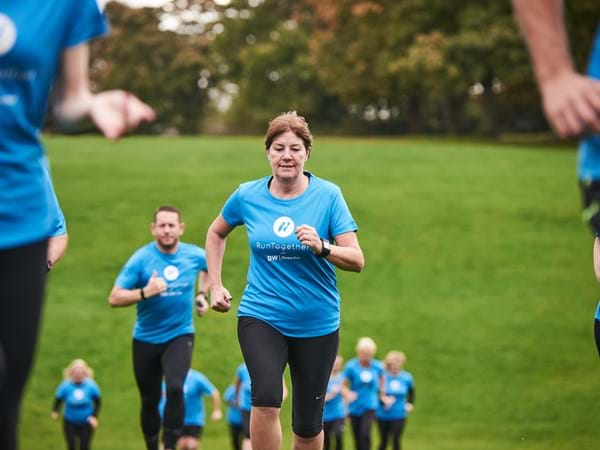
Do I have to fill out the registration form to join RunTogether?
The information we collect is primarily used for safety of both Runners and Run leaders, as well as administrative purposes to allow leaders to contact you regarding your booking, any changes or cancellations. Any other information you provide as part of your registration helps us develop and improve the service we provide to all runners – this data is also anonymised. The data you provide us with is stored securely and you can find more information on why we collect data, how it’s used and more here
Joining a RunTogether group for the first time
I'm new to running. Can I go along to a RunTogether Group?
Yes, absolutely, there are lots of 'Get Me Started' groups, which begin with walk/run sessions following the Couch to 5k programme or similar. You can use the filters in the search tool to find your closest Get Me Started group.
What if I can't keep up with the group?
Not a problem, your qualified Run Leader will be ensuring everyone is supported during the run. If you are nervous about this, give the Run Leader a call before the session to chat about it.
Do I need lots of expensive running gear to take part?
No, for safety and your comfort we would suggest getting a good pair of trainers and wearing clothes you are comfortable running in. Most people wear shorts, tracksuit bottoms or leggings, and a t-shirt along with weather dependent layers. If you are running in the dark, high visibility and bright colours are recommended. If you want some guidance you can speak with your Run Leader directly and check out this article on useful running kit.
If you're looking for some new kit, we would recommend visiting the DW Sports website. Our official retail and fitness partner DW Fitness First, offer RunTogether members exclusive offers, so make sure you check out our monthly e-newsletters so you don't miss out!
How do I know which group is suitable for me?
There are three types of run session, categorised according to pace, distance and experience:
Get Me Started
Keep Me Going
Challenge Me
Find a full description of each type of session HERE
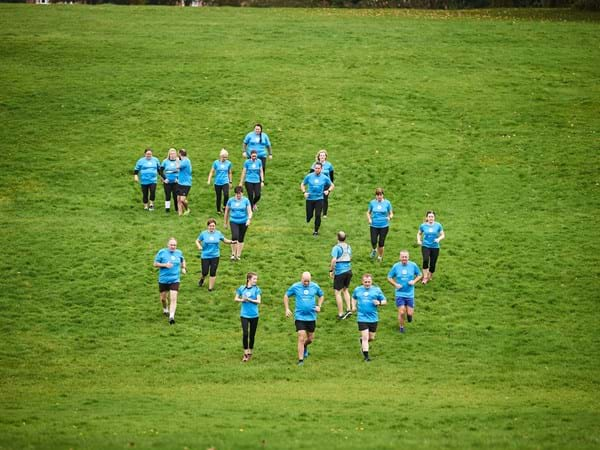
I can't commit to every session does that matter?
There is no obligation to attend every session listed on the group page, simply book onto the sessions you wish to attend.
Can I join more than one RunTogether group?
You sure can, simply book the sessions you wish to attend #BookCheckInRun
Can I run with my buggy?
Our qualified Run Leaders are insured to lead training sessions with runners using running buggies, however, please check with your Run Leader directly if you are able to attend with a buggy and that the route is suitable for running with a buggy. Only buggies designed for running with may be used and they must be fitted with a five-point safety harness. You will be responsible for your child’s safety, so please be aware of the dangers of running with children in buggies.
To contact a Run Leader, please visit their RunTogether group page.
Can I run with my dog?
Unfortunately, the insurance our Run Leaders are provided with does not cover Canicross activities. Please contact your run leader prior to attending a run with a dog for more information, you can find their contact details on their RunTogether Group page.
If you are a visually impaired runner, our Find a Guide service is available to help you find a qualified (volunteer) Guide Runner in your area. If you would like to run with a Guide Dog at a group run contact the Group Leader directly.
Visually impaired runners and Guide Dogs
If you are a visually impaired runner, our Find a Guide service is available to help you find a qualified (volunteer) Guide Runner in you area. If you would like to run with a Guide Dog at a group run contact the Group Leader directly.
RunTogether Runner App
Do I need to register to use the Runner app?
If you are already registered on RunTogether, you can use your existing log in details to access the runner app. Please make sure you choose the same log in option you registered with on the website (e.g. if you registered via Facebook, log in to the app using the Facebook option).
If you are new to RunTogether then you can register directly through the app using your email address or social log in details.
How do I download the Runner App?
The Runner app is completely free and is available to any Runner in a RunTogether Group.
For iPhone users (version 5 and above) the app is available to download via the Apple Store, HERE
For Android users the app is available to download HERE
How do I find my nearest run?
The ‘Explore’ area of the app will automatically search for runs in your area (assuming that we have your up to date post code stored in your profile) and provide you with a list of upcoming runs. If you want to change the search location on the ‘Explore’ area you can type an alternative post code or location in to the search bar at the top of the screen and search for runs.
Once you’ve found the run you want to book on to, simply click on it to view more details and then click the ‘Book’ button to confirm your place on the run.
How do I book on to my regular group runs?
If you are already a member of a RunTogether group and regularly attend their group runs, the group will be listed in the ‘My Groups’ area of the app. You can click on any of your groups to view their group runs and then click on the run to book your next session.
What is ‘Quick Book’?
We wanted to make it as easy as possible for you to book on to your next RunTogether run so we’ve added a ‘Quick Book’ function which is accessible via the ‘My Schedule’ area of the app. Once clicked you will be presented with a list of available sessions to book for your group and in one click you can book on to your next session. If you are a member of multiple groups you can change the group using the drop down on the ‘Quick Book’ page and the sessions will update to show the upcoming sessions for that group, you can also choose the run you are looking for from the drop down list to only see sessions relating to a particular run.
How do I cancel a session?
If you can no longer attend a session you have booked onto, please go to the ‘My Schedule’ area of the app, click on the session you want to cancel and then click ‘Cancel session’ at the bottom of the screen. The run will still appear in your schedule but it will be flagged red and marked as ‘CANCELLED’ to show that you didnot attend.
How do I change my emergency contact details and medical information?
Safety is one of our core values at RunTogether so it’s important to keep your run leaders informed of any details you might have forgotten to add when registering. To change your emergency contact details or medical information, please go to the ‘My Profile’ area of the app and open ‘My group run details’ option, where you can update this information
What do I do if I can’t log in or use the Runner app?
If you are having any issues with logging in or using either app, please contact us on support@runtogether.co.uk and we will help you to log in and start using the app.
Ages of runners taking part in RunTogether Groups
Leadership in Running Fitness (LiRF)
England Athletics provides qualified Run Leaders with insurance cover that includes being able to cater for runners aged 12 years old and above.
Any Run Leader holding a Leadership in Running Fitness qualification will not be insured for runners under 12 years of age.
England Athletics does not recommend that children under 12 years of age take part in RunTogether Group runs. If asked, a RunTogether Group Leader should inform the parent / guardian of this recommendation, and that the group sessions are not designed to cater for younger participants. If a parent or guardian wishes to ignore this recommendation, then the Group Leader should inform them that they (the Group Leader) cannot be responsible for them during the session they have planned, as they are not appropriate for the child. The child in such case becomes the sole responsibility of the parent/guardian in any subsequent RunTogether session.
Level 2 Coach /Athletics Coach
Coaches holding a level 2 Athletics qualification or above or Athletics Coach qualification are covered to lead sessions for children aged 8 and above, however, if a Coach is operating a RunTogether Group we still advise that they only accept children aged 12 years and above.
There are a number of reasons why we advocate RunTogether Groups only cater for those aged 12 years and above; this relates to the athlete development philosophy that England Athletics and UK Athletics endorse.
More information regarding the growing child and coaching children, can be found here.
I booked on a run but can no longer attend, how can I cancel it?
To cancel your booking, simply go to our website and sign-in to your account.
Once signed-in, click on the 'My RunTogether' section in the top right corner and select 'My booked runs' from the dropdown menu. You will be able to cancel any bookings on this page.
I have forgotten my password, how do I reset it?
No worries, enter your email address in the link below and we will send you a link to re-set your password
What is This Girl Can Run & do they provide running groups?
The sister page of This Girl Can, This Girl Can Run celebrate women everywhere who are running, jogging or walking
their way to a more active lifestyle. This Girl Can Run do not provide running groups. More info related to the 'This Girl Can' campaign can be found HERE.
Why are there no sessions in Wales / Scotland / Northern Ireland?
RunTogether is an England Athletics initiative; our funding sources guide our work to be focused on delivering programmes in England only, however the other home nations have local programmes to support their communities:
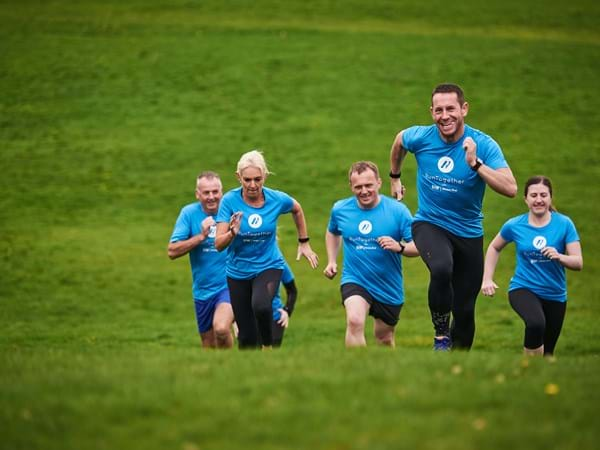
How do I nominate my group for the GOTM title?
Each month we award one RunTogether group with the 'GOTM' title to be in with the chance of winning, email support@runtogether.co.uk
with your group name, a short piece about your group and some photos!
Where can I find your monthly news?
Each month we send out an e-newsletter to all our registered Runners, this should come straight to your mailbox. Not receiving them? Not to worry, simply email support@runtogether.co.uk and we will add you to the mailing list. In the interim, all our monthly news can be found here
How do we order RunTogether t-shirts and high visibility vests?
How do I become a Run Leader?
All information can be found HERE.
Where do I find my nearest LiRF qualification?
You can find more information about the Leadership in Running Fitness (LiRF) qualification below. To find your nearest location, please add your postcode on the side panel and search, a list of courses will then show on the bottom of the page. You will be able to book on directly through this website. Once your qualification and DBS are completed, send us a quick note (support@runtogether.couk) and we will be able to add your group page to our platform so runners can #BookCheckInRun
How do I prevent & treat shin splints?
Shin splints are a bit of a catch all term for a number of potential issues that can cause pain in the shin area of the lower leg.
Most commonly as coaches we see pain in this area due to medial tibial stress syndrome (MTSS). This is a common issue for runners where pain is caused either through tendinopathy of the muscles that attach into the tibia, inflammation in the periosteum - the lining on the bone or indeed a stress response in the bone itself. MTSS develops in short because the muscles and tendons around the tibia are no longer able to manage the repeated stress of your foot striking the ground and pushing off as you run. You’ll notices generalized pain and discomfort on the inside area of the calf or shin bone. If you notice a much more specific point or pain that may be sharp this is a warning sign of a stress response or fracture. In all cases it’s a wise move to consult a sports physiotherapist or GP on a sensible course of treatment. Runners can reduce the likelihood of develop MTSS through a number or tweaks and adaptations in their running and kit;
- Avoid the terrible too’s - too much, too soon, too hard or too often. Take an honest look at your life and the stresses on your recovery, look to build and consistent and sustainable base of running rather than jumping from nothing to 5-6 runs or more a week if you have not got the experience to adapt to this and build the volume of your runs gradually - for example 5-10 minutes on a weekly long run.
- Mix it up - get off road when you can. Many elite athletes will complete 60% or more of their running on trail and grass. Softer surfaces will reduce some of the peak force your shin will experience and will help your body engage different muscle groups with each stride.
- Footwear - Well-fitting shoes which match your running gait can help. Flat feet and over pronation in particular can contribute to MTSS so consider a gait analysis with a good shop or professional.
- Flatten it out - Regularly running on a consistent camber for extended periods might also increase your likelihood of creating additional tibia stress. Aim to mix up your surfaces and avoid long stretches of cambered running.
- Stretch - regular calf muscle stretching for both gastrocnemius and soleus muscles can help as well as sports massage or self-massage. Don’t massage directly on the painful area of the bone though.
- Rest & recovery - Rest and recovery is critical to allow your body to adapt and strengthen. Regular rest days weekly or a minimum over every 10-12 days even for experienced athletes will help. Keeping your easy and recovery runs fully relaxed will also help. Consider the benefits of an occasional extended period off or end of season break of a week where you either full rest or cross train.
- Get technical - Running technique can be major contributor to MTSS - in particular running with a big ‘over-stride’ where your foot lands a long way in front of your body and runners who strike on the ball of their foot can also see significant loading for their calf muscles. Speak to a coach or sports physio who can offer specific, tailored advice.
- Get strong - a strengthening program for your calf muscles, tibilis on the shin and the muscles around the ankle can help you prevent MTSS as your muscles will be better about to cope with repeated loading.
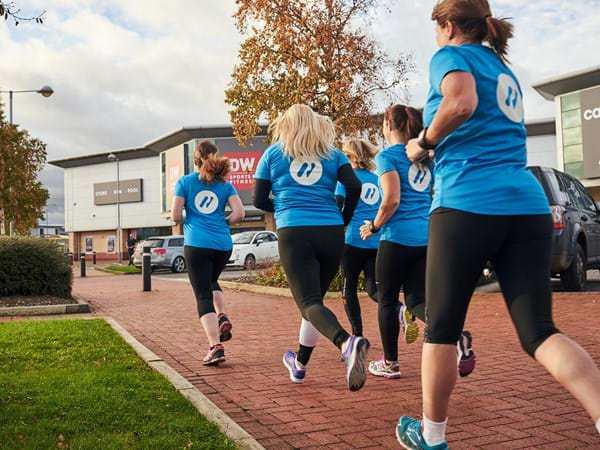
What is gait anaylsis?
For the best fit and a comfortable running experience, you should have your gait analysed by an expert, who can then advise you on the best type of running shoe for you. If you’re going to be running three times a week or more, gait analysis is important. The service is available free in every DW SPORTS store, find your nearest HERE
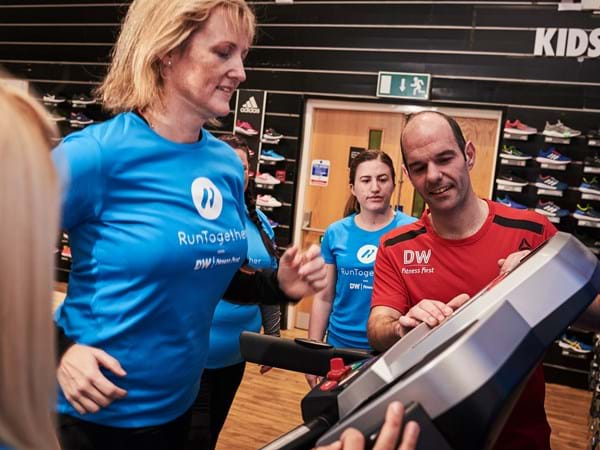
Why do I get stitches and how can I prevent them?
There are still many theories surrounding running ‘stitches’ where you feel a pain in your side, stomach or ribs when you run.
The causes range from eating foods which are known to cause discomfort when you run, compression of vertebrae in the spine, to a lack of blood flow to the muscles around the diagram, through to pulling of the muscles and tendons which support your organs as they move down as your foot strikes when you run.
Whilst the causes remain disputed if you suffer regularly with stitches try the following ideas to prevent and treat them when they come;
- Learn to belly breathe - learn to breathe more deeply by contracting your abs and aiming to exhale as much breath as you can, before then breathing deeply in, pushing your tummy out and allowing the lungs to expand. Breath strongly, imaging needing hear your own exhale.
- Breathing practice - Practice breathing techniques outside of your run sessions. Lie on your back with a pillow under your head and knees. Place one hand in your chest and the other on your belly. Breath in for a count of 3, hold for a count of 3 and exhale for a count of 3. You should aim for your hand placed on your belly to move significantly more than the hand on your chest.
- Keep a training dairy - Note the foods and fluids you take on before and during your runs. If you notice a consistent pattern with stitches emerging after eating certain foods, change them! Some runner find drinking excessive water on a run can also be a trigger.
- On the run itself slow down and focus on breathing more deeply. If you are forced to stop then try bending over and touching your toes before starting to run at a slower pace initially.
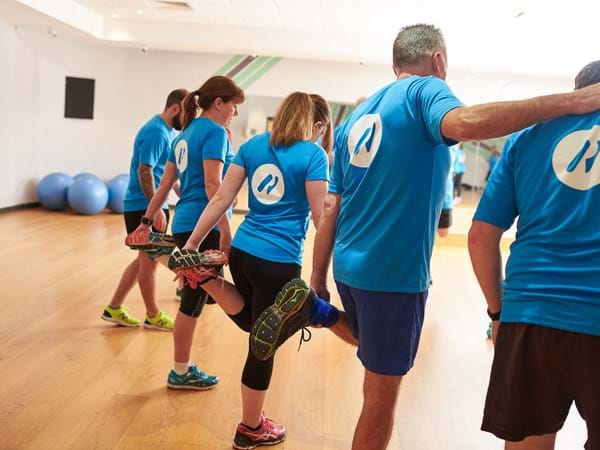
How do I tackle hills?
Hill training is often called ‘speed work in disguise’. Running on hills can increase both strength and speed and can allow you to get a highly effective running workout with limited miles in the legs. There are a number of different ways you can incorporate hills into your running;
- Rolling Routes - Of course the simplest way to tackle more hills is to take one of your weekly runs and run it over a rolling or hill route. You can turn a standard 45-60 minute steady run into a fartlek session by simply adding the undulations and aiming to ‘attack every hill’ keeping the remainder of the run relaxed.
- A-lactate hills - Very short 8-10 second hills run a maximum speed with a long, full recovery can help build and maintain pure speed without creating a big strain on the cardiovascular system.
In terms of technique aim to focus on a tall posture on the way up with high hips and focusing on a good strong elbow drive, with a light foot strike on the md or forefoot. Imagine driving up the hill from your hips. It can be good practice to get use to running through the crest of a hill and continuing for a short while at the top/down to maintain form. On the way down the situation is the opposite, runners try to lean back and effectively apply a break. Imagine almost leaning very slightly forward as you run downhill, keeping the leg speed high and focusing on balance and awareness of potential hazards.
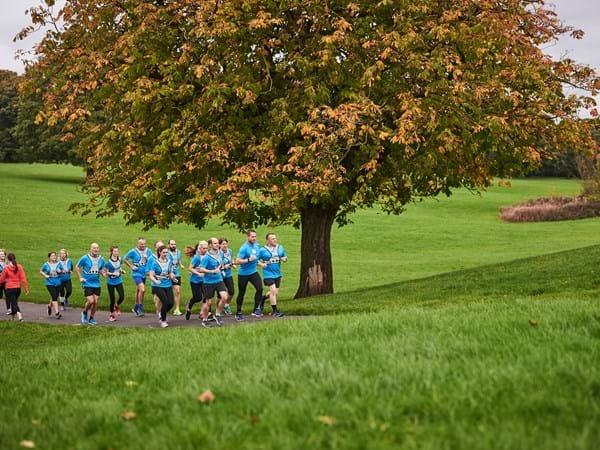
How do I increase distance?
For many runners increasing distance can feel a real challenge and longer races such as 10km - marathons can feel daunting. Here are a few key tips to building your distance safely and effectively;
- Slow down - many newer runners I meet struggle to build more distance because quite simply they are trying to run too fast. Get used to the speed of chat, imaging you can full converse with a person running next door to you, or run at or below 70% of you maximum HR.
- Small chunks - Aim to increase the distance of a weekly longer run by 5-10 minutes each week, with a short cut back every 3-4 weeks. This will allow you to increase your distance in manageable and sustainable chunks.
- Spread your mileage - Initially one way to increase the volume of your running very effectively is to focus on spreading your running across your week. A weekly longer run is of course very effective for many runners but a supporting mid-week slightly longer run between 60-90 minutes can be very effective increasing your overall running volumes without being totally dependent on one long weekend run.
- Find some company - Increasing your distance is as much a mental challenge as physical check out the England Athletics website to find your local running club or check out RunTogether for local running groups. With company you’ll see the miles ticking by that much easier.
- Get fueled - As you try to build your longer runs it becomes increasingly important you have the energy to run well and consistently. Aim for good breakfast of healthy complex carbohydrates a couple of hours before your weekly long run.
- Mix up your routes - Aim to enjoy your runs! Get out and explore new routes, aim to get off road and keep your running stimulating and interesting, the more you enjoy your running the more you’ll want to add that little bit more!
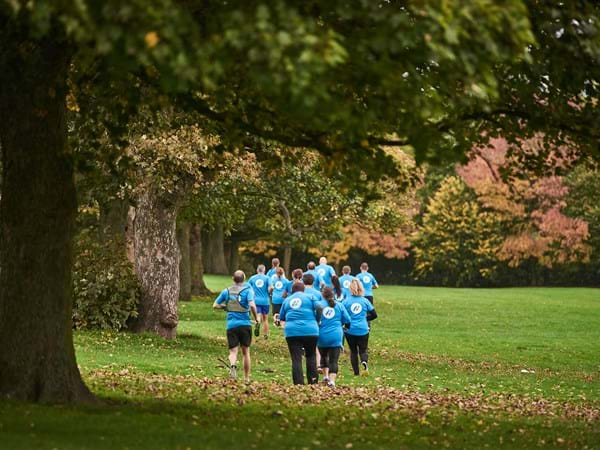
How do I increase pace?
Keeping it simple as you get fitter your heart gets stronger, meaning we can pump more blood with each heartbeat, which means we can run faster for the same effort. So in basic terms all your running training, whether easy paced runners, or harder interval sessions, which help you increase your running pace. However, there are a number of ways you can increase your rate of progress;
- Interval training or fartlek - Your body likes small doses of stress. Including shorter bursts of speed into your running sessions will allow you to get your body, and your mind used to a quicker pace. Simple sessions such as 6 x 3 minutes at a 3-5km pace with a short rest, to ‘threshold’ or tempo runs of up to 20-30 minutes at a controlled discomfort through to fartlek sessions where short faster efforts are mixed with steady running are all good places to start.
- Pure speed - Speed isn’t all about your cardiovascular system, it’s also about the power your muscles can produce. A great way to develop and maintain pure speed with our significantly stressing your cardiovascular system is with very short maximal hill sprints. A weekly session running 5-10 sets of very short hill sprints between 8-10 seconds, taking a full recovery between each will help recruit more fast twitch muscle fibers. You can complement this with ‘strides’ getting used to a more relaxed fast rhythm after some of your easy runs.
- Strength & Conditioning - Having the ‘frame’ on which to lay your bigger engine is critical to speed. A core routine a couple of times a week is a good starting point but also exercises such as squats, single leg squats, lunges and deadlifts can also help develop leg and postural strength allowing your to generate and maintain more speed when you tire.
- Biomechanics - A feeling of ‘quickness’ can be developed with a focus on drills, proper running form and biomechanics. Simple drills such as straight leg kick outs, speed ladder drills, skip drills and for the more experienced bounding, box jumps and depth jumps can also support the development of power (speed and strength combined). These can be completed after easy runs or before your harder run sessions.
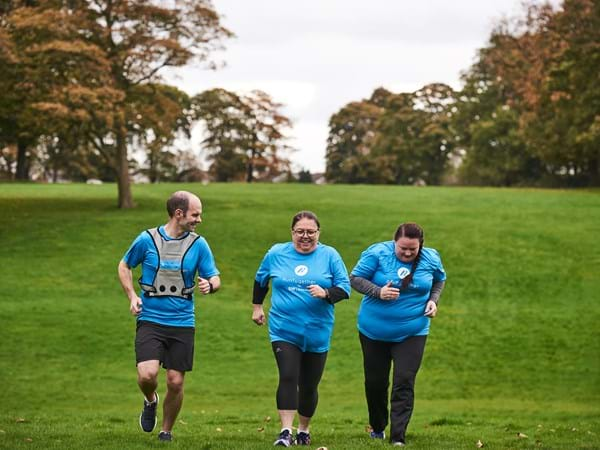
How do I know when I'm dehyrdated?
DW Fitness First offer their advice on how to spot the signs of dehydration;
1. CHECK YOUR MUSCLES
Muscle cramps are a giveaway that you’re not hydrated enough. If you start to feel cramp coming on, take a break to have a drink. Don’t guzzle it down; instead, opt for short, small sips over a few minutes.
Once you’re refueled, ease yourself back into your exercise, being careful not to overdo it: it can take a while for your muscles to fully rehydrate.
2. DON’T IGNORE A DRY MOUTH
One of the first signs of dehydration is dry mouth. As soon as your mouth starts feeling a little dusty, get a drink. Ignoring dry mouth can seriously impact your performance.
3. PINCH YOURSELF
Skin elasticity, which is the skin’s ability to change shape and return to normal, is a giveaway of your hydration levels (though it’s not 100% reliable for everyone). Gently pinch the skin on the back of your hand and hold for a few seconds. If the skin takes a while to return to its normal position when you let go, you may be dehydrated.
4. STOP IF YOU FEEL DIZZY
Feeling lightheaded during a workout is a sign of dehydration and a signal to take your workout down a notch.
Though willpower sometimes makes us want to push ourselves through a few more reps or another mile, feeling dizzy is an indicator that your brain isn’t getting the oxygen it needs. You should stop exercising the moment you feel dizzy; powering through a dizziness spell can be dangerous.
DW Fitness First provide more information on hydration HERE.
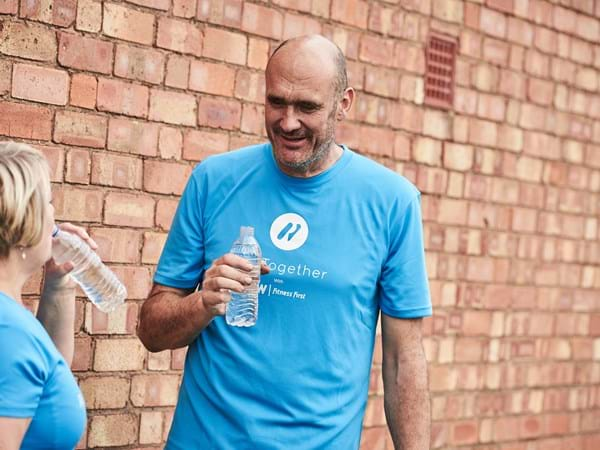
What can you/your group do to be considered for GOTM?
Do you want to nominate your group to be in with the chance of winning the next group of the month title, but not quite sure what the requirements are? We have a formulated a list of things you and your group can do, to make your nomination stand out from the rest.
If you think your group deserves to be nominated then email us and make sure you include some great photos!
· All runners within the group are registered with RunTogether
· All runners attending sessions are registered and checked-in on the day, using both the Run Leader and Runner apps #BookCheckInRun
· Your group list public sessions on the RunTogether website, allowing runners to find you and book on your group runs directly
· Group location and directions (if necessary) are provided so runners know where to meet you
· Pictures and contact details of Run Leaders are listed under your specific group page, if prospective runners want to get in touch
· You/your group regularly post/share/comment on the RunTogether Facebook, Twitter and Instagram pages, so we can see what great things you are doing
Nominate your group by emailing us
How do I use a foam roller effectively?
Our official retail and fitness partner DW Fitness First, offer some great advice on how to use a foam roller.Target the outside part of your lower leg, which can be associated with shin splits. Start at the top near your knee and work the roller down the leg. Try this in a kneeling position. You can also target the calf in the same position by rotating your leg to the side to pinpoint knotted muscles.
Foam roll the inner muscle on the front of your thigh by positioning yourself in a plank position. Rock your plank forward and back, with the foam roller underneath your thigh, to relieve tension in that area while also working your abs.
More more info head to the DW Fitness First website
How can I prevent chafing?
Before you run, lubricate the areas which may rub with petroleum jelly. Whilst loose fitting, cotton clothing is great for the Summer, skin tight compression garments will help to prevent chafing. Seamless and sweat-wicking fabrics are ideal.
Where can I find your privacy notice and cookie policy?
Our privacy notice and cookie policy can be found at the bottom of website (no matter what page you are on)
Privacy notice / Cookie Policy